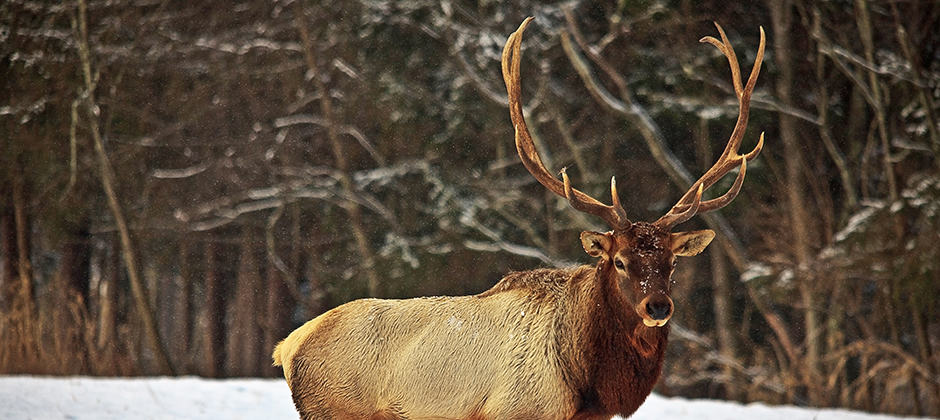Share this article
Has trophy hunting’s conservation record been forgotten?
The concept of “trophy hunting” can be a hot-button topic that raises emotions on various sides of the issue. Recently, the controversy has played out in the journal Science, where competing views have appeared on the letters pages.
“There is compelling evidence that banning trophy hunting would negatively affect conservation,” wrote the authors of an Aug. 30 letter, which argued that many lands are protected specifically for trophy hunting.
That prompted responses this month from critics — including some TWS members — who insisted those arguments “overlook the role of values” in wildlife management. “Science can quantify risks,” they wrote, “but it cannot tell us whether they are acceptable or by whose values they should be judged.
For the Boone and Crockett Club, what gets lost in the controversies is the role trophies have historically played in conservation.
“From the Boone and Crocket Club’s perspective, what’s being overlooked — and needs to be part of this conservation — is the fact that this concept of ‘trophy’ was a linchpin in launching the conservation movement itself,” said Keith Balfourd, the club’s director of marketing. (Read its position statement on trophies and trophy hunting here.)
Go back to the turn of the 20th century and the picture of North American wildlife — and game species in particular — looked very different, Balfourd said. A number of species were teetering on the edge of extinction due largely to market hunting, unregulated sport hunting and irresponsible land use. If unregulated hunting was part of the problem, early conservationists saw regulated hunting as part of the solution.
When Theodore Roosevelt formed the Boone and Crockett Club in 1887 to address the national decline of big game species, Balfourd said, he looked to sportsmen to advance the concept of conservation and game recovery.
“Roosevelt’s vision was, the best way to save what game was left was to not eliminate public hunting, but to continue hunting,” he said. “It was very counter-intuitive. But Roosevelt made a very important distinction and a very important decision: ‘We’re going to continue to allow public hunting. But it’s going to be very well-regulated and guided by scientific game management to encourage natural recruitment, and allow species to recover and thrive once again.’ The whole reason to allow hunting was to inspire conservation. The model was simple. Sportsmen had a vested interest in seeing game recover and thrive so they could continue this outdoor tradition and provide wild game meat for their families. You enlist these people to be part of the new model for the treatment of wild natural resources and the solution, which in this case was population recovery and resiliency, so there would be hunting tomorrow.”
When game species were in dire straits, big game hunting was closed in certain areas until struggling species, like white-tailed deer (Odocoileus virginianus), had a chance to recover. As their numbers rebounded enough to allow limited hunting again, new regulations were put in place that allowed the hunting of males but protected breeding populations’ females and their young. The oldest males had already done their part to build populations, Balfourd said, and they were often the wariest, the hardest to harvest and had the biggest antlers, which appealed to sportsmen.
“There was already interest in the largest of a species — taking a large bull elk, or moose or a well-antlered buck over a smaller, younger one,” he said. “An older animal — a trophy — also represented a hunter’s patience and skill as a woodsman and as a tracker. It was natural for sportsmen to aspire to that level.”
The attraction of the biggest and the best was also instrumental in enlisting non-hunters to get behind the conservation movement, Balfourd said. That prompted the Boone and Crocket Club to unveil its “National Collection of Heads and Horns” — a taxidermy display of big game species from around the world — at the Bronx Zoo in 1926. The engraved stone over the entrance read, “In Memory of the Vanishing Big Game of the World.”
“The club used trophies as a way to raise awareness to the plight of wildlife that only sportsmen were aware of at that point,” Balfourd said.
Twenty years earlier, the Boone and Crockett Club had devised a system for measuring and scoring antlers, horns, tusks and skulls. In 1932, it published its first record book of exceptional animals, which Balfourd said also served as a track record of species recovery across time.
“These data have now become a conservation and wildlife management tool used by wildlife managers to track successful or unsuccessful management programs,” he said. “Trophies are like the canary in the coalmine. If large male specimens are on the landscape, and hunters are finding them, it’s an indication that mortality is low, the habitat is healthy, and there is a balance in age structure within a population. If mature males are absent, that is a population that needs attention.”
This past gets lost in the controversies surrounding trophy hunting, Balfourd said.
“What’s also missed in this conversation is that sportsmen have an innate responsibility to the wildlife,” he said. “People value what they have access to and can benefit from and will fight to keep what they value.”
The Boone and Crockett Club is a leading sponsor of The Wildlife Society.
Header Image: A mature elk bull stands in the snow. ©ForestWander








